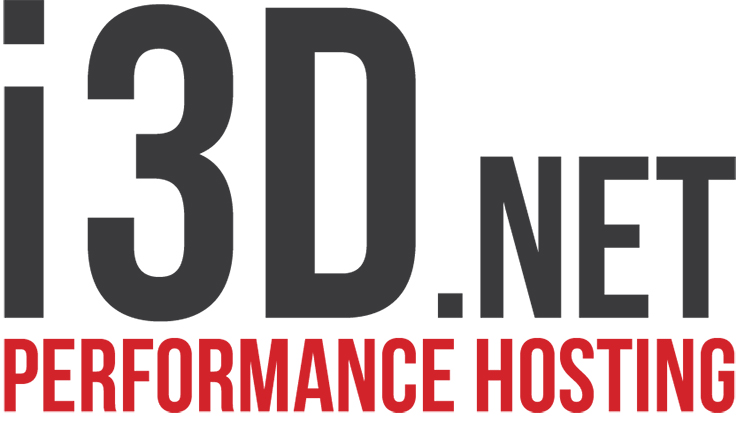Keeping Players Online: Creating Provider Ecosystems for Hybrid Game Hosting
Evelien Smeenk from i3D.net looks at how platform orchestration can grant access to diverse actors rather than searching for a single “holy grail” hosting solution.

© gorodenkoff |istockphoto.com
The game hosting market is growing almost as fast as the game industry it supports. Online multiplayer video games, particularly, are both soaring in popularity under social distancing measures and putting pressure on infrastructure services. Some providers are turning to hybridized and collaborative solutions, weaving together digital ecosystems of vendors and services that cater to a game’s fluctuating hosting needs.
Video games are more popular than ever. But if – and even when – a game takes off has become less and less predictable thanks to the power of social media. While every game company wants their game to flourish, viral success for an online multiplayer game can create unexpected demands on the game’s hosting infrastructure.
For a big influx of unexpected players, game developers will need to scale their infrastructure, and fast! A lot is at stake if your hosting decision ends up not matching your needs. Too many players at once can get your available resources filled up, leaving some players waiting. This experience is so unpleasant, a player may simply abandon the game. Or scaling your game into expensive emergency options may take you over budget, essentially making or breaking the game for good.
The rise of online multiplayer games shows no signs of slowing down, and the game hosting market is turning towards digital ecosystem models to help game studios keep up with their own success.
What are the options?
Until recently, game companies made a choice between bare metal and public cloud hosting solutions, committing to a single provider of their chosen option. As each option comes with its own set of pluses and minuses, it forced compromises.
Bare Metal
Bare metal is recommended for online multiplayer games that are latency-sensitive, because this provides the game studio with full control of the hosting requirements. Being a single tenant on high-performance machines means there is no risk of the “noisy neighbor” effect, the taxing of shared resources by other tenants’ workloads. Bare metal also allows for increased security and customizations like extra storage.
But bare metal is not always conducive to scaling. It can be slower to deploy than the virtual machines of public clouds. This, coupled with agreements for commitment terms and extra resources, has left the impression that bare metal is less flexible. However, this is changing with alternative models like bare metal cloud.
Public Cloud
Public clouds have been a popular hosting option among game companies for their perceived flexibility. This hosting option offers virtualized machines (VMs) on a pay-per-use business model, and VMs can be spun up quickly to provide more capacity.
However, public clouds do not offer limitless scaling capacity, a fact that is rarely realized by gaming companies until it is too late. For large games on the market, public clouds may still impose a quota limit on servers, and long-term commitment agreements. Negotiating on quotas may prevent the quick scaling needed for dealing with a large player influx, while the commitments leave the studio locked in with their provider and unable to migrate to more favorable hosting options.
How to pinpoint the right option?
Making a hosting decision for a game company is challenging. The bare metal vendors, large public cloud providers, and various platforms all jostle for a seeker’s attention. Game companies often decide case by case, depending on the needs of the video game.
A crucial deciding factor is often the geographical location of a game’s market. This can truly dictate which provider to go with. Many public cloud providers do not have resources available across the globe. For example, if your video game has a large market in the Middle East, but your provider does not have optimized availability in that region, it may prove difficult to serve those users the best experience.
Even if your provider fits your geographical requirements, they may have business terms that do not fit your game. For example, if your game follows the trending Free to Play business model, players do not purchase your game upfront. Instead, the game makes money through in-game micro-transactions. That will translate into a lower hosting budget per individual player. However, if you are locked in with a cloud provider you chose for scaling and not budget considerations, a game may find its hosting costs spiraling when it becomes too popular.
The two examples above show that choosing a hosting provider is not as easy as picking the first option that turns up in your search results. To complicate matters further, often what is lacking in one hosting option can be found in the other. In choosing between bare metal and public cloud, each has what the other lacks. However, some providers have found a way to offer the advantages of both in the form of orchestration platforms.
Orchestration platforms as digital ecosystems
Recent years have given rise to game hosting orchestration platforms. Such platforms provide a game company with an environment for managing their game hosting. Crucially, orchestration platforms involve multiple providers, usually a mix of bare metal providers and public clouds, forming a digital ecosystem.
Orchestration platforms give their users access to their provider ecosystem, enabling them to make use of multiple hosting options in different circumstances, creating an optimized, custom hosting framework.
The biggest advantage of an orchestration platform is the flexibility it offers because of its ecosystem format. Adopters of the model can avoid being locked in with a single provider and configure many options to suit various needs.
So, if you need to optimize for latency in different regions, you can deploy game servers in region A with provider X and in region B with provider Y. Or should your game see an exponential influx of players within a short period of time, you can quickly scale into various public cloud providers to meet that demand and later transition back to bare metal to save costs. This ensures a consistent, high-quality experience for the players themselves.
In short, orchestration platform ecosystems increase the flexibility and performance of hosting choices.
Additional value in orchestration ecosystems
Besides creating ecosystems with other vendors, some orchestration platforms also offer their own ecosystems of services. Orchestration platforms can offer a broad range of benefits to improve and streamline game hosting, such as matchmaking, anti-cheat solutions, and player services, just to name a few.
i3D.net’s ONE Platform, for example, enables studios to combine their core hosting needs with other products such as protection from DDoS attacks, and a Content Delivery Network (CDN). The latter can be especially handy in an industry rapidly shifting away from physical sales to digital downloads.
Digital distribution allows companies to send out game patches and game updates directly to game consoles. This is most effectively done using a CDN, which stores the content in dispersed locations close to the end-users. Unlike a general CDN provider, an orchestration platform can tailor their products to the demands of their core customers. The ONE Platform, for instance, improves the patching and update process by ensuring that the update does not kick players out of their game and ruin their experience.
An orchestration platform that has services like this built-in saves the game studios needing to contact external parties and getting weighed down with complex integrations or unnecessary costs. Orchestration platforms, therefore, can provide the advantages of both an ecosystem of multiple resource vendors, as well as an ecosystem of services from a single provider.
An “and” rather than “or” mindset
If you want to ensure you have implemented the right solutions before your game launches, it cannot be an afterthought, nor a pure financial play. However, projecting your hosting demands is a complex process, and one that is difficult to get right.
By harnessing the potential of digital ecosystems, hosting orchestration platforms take pressure off gaming companies. A reasonable estimate of player numbers can be safely hosted on a stable bare metal layer, and unexpected peaks can be scaled into cloud providers of choice. More importantly, the clear advantages of an ecosystems-based model shows that a collaborative “and” rather than an individualistic “or” mindset results in business wins for all parties.
This article was written with the gaming industry as an example. However, as Felix Höger wrote in an article published in dotmagazine in August 2020, this trend is seen in a wide variety of markets. So even if you are not working in the video gaming industry, it may pay off to investigate options that grant access to diverse actors rather than searching for a single “holy grail” solution.
Evelien Smeenk is Team Leader of Development with i3D.net. In this role, she is responsible for i3D.net’s orchestration platform, ONE. Evelien holds a master's degree in Computer Science with a specialization in Game & Media Technology. Before joining i3D.net, she was responsible for Software Development as a project manager and team lead with various software development agencies, taking care of the timely and high-quality delivery of many products.
Please note: The opinions expressed in Industry Insights published by dotmagazine are the author’s own and do not reflect the view of the publisher, eco – Association of the Internet Industry.




